[Edit: revised my complete post]
I have a problem with a project I'm currently working on, and I would really appreciate some help.
I created 10pcs of 100W RGB LED modules that are communicating via DMX512. Already two times now, my MAX485 transceiver IC's have blown out on several different units. It happens on either power on, or power off (can't tell the difference), but never DURING operation. Most MAX485's blown end up with their A or B input connected to GND or VCC. Some don't short out, but simply stop receiving. Anyway, the problem seems to be coming from the RS485 side of the chip (although I'm not 100% sure).
Now I've optained the MAX485 cheap on Ebay, and I'm starting to think they might be fake or flawed. But I'm not sure about that. My plan is to replace them with real SN75176AP transceivers, that I can order from a reputable company. (The SN75176AP is more cheap than the MAX485, and I heard also more rugged). But before I do, I wonder if I've overlooked some error in my schematic that causes them to blow. Hence my first question here on the forum :-). Below is the schematic: (part numbers might be different from the ones mentioned in the comments)
All 10 units are powered by the same transformer, with soft-start relay that closes automatically after 10 seconds.
The transformer is a 28-29VAC, 40A (heavy) 'old-fashioned' transformer. This leads to about 40VDC after rectification.

Then the schematic of one unit. There are ten of these in total, all connected to the same transformer.
Power: LM2596 is a switching regulator that can handle 40V on the input

Old situation with R18 still in, and unidirectional D10&D11 (7V working voltage suppressor diodes). R18 was based upon this article Page 19 - 4.5.2.
New desired situation with R18 taken out and 12V bidirectional suppressor diodes (untested).
The DMX controller looks like this: (Vcc comes straight from a 5V, 1A wall-wart SMPS)
My main concerns are:
- C1-C9 are 9x 1mF capacitors. Because there are 9 of them, they have a very low ESR. Combined with 20m of wiring going to these modules, what about inductance. Could that create a pulse destroying my MAX485's? Even with D1 and soft start in place?
- My theory at the moment is that the (fake?) Ebay MAX485's can't handle RS485 signal being present on the line while not being powered. Sometimes my DMX controller is on, and the transformer is off. This should not be a problem according to the datasheet, but if they are fake, it might be?
- If I omit R18 (previously R2,R3 - sorry about the different numbering), what about large currents through my DMX GND line, as there are 10 of these units with the GND's connected to each other in this situation. Maybe I need just ONE bridge rectifier near my transformer, and take out the ones in the units? But I'd need a 40A bridge - if it's not nessecary I'd rather keep things as they are.
- AND MOSTLY: Do you see any reason why the MAX485 could blow out?
(This is a working prototype. So apart from the MAX485 blowing out every now and then, everything works. Also the DMX communication. My question is really focused on why does the MAX485 blow out. If there's no real reason, I'd like to think it's because they are fake Ebay ones, and try real SN75176AP's. Making big changes at this stage of development will involve lots of work as the modules are already finished and ready to be used. So I'd like to prevent big changes as much as possible.)
Thank you so much for your help. Also to the ones already commenting and answering. Great!
